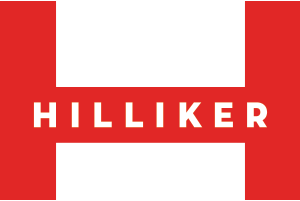Here’s a familiar story.
An entrepreneur is outgrowing her current space or is ready to lease new space for the first time. She goes for a drive, sees a sign on a building that looks like it might fit her company’s needs, and calls the number listed.
She asks the broker or the building owner, “How much is the rent?”
The person on the other end of the line may give her a quote based on square footage or a ballpark monthly estimate. But that number is rarely the full story.
Leases are complicated, and there are many items to consider and negotiate that have an impact on a business owner’s budget. For example:
- Who will pay the property insurance?
- Who will pay property taxes?
- What modifications will the renter need to make to the building, and how much will the landlord pay for any of her needed improvements?
My colleagues and I shine when we get to help business owners figure out how to make a lease agreement work for them. We get into the weeds of the contract, ask hard questions, and go to bat on our clients’ behalf.
We know what needs to be done and how to negotiate the particulars of a real estate deal. In this article, part of our series on how to find commercial property in St. Louis, we’ll talk about the different lease structures and how to negotiate a deal that makes the most sense to the renter and the property owner, setting both parties up for a long and fruitful relationship.
St. Louis Commercial Real Estate Lease Structures 101

Every lease has a base rental rate, which is the first number a broker or property manager might quote when asked. But each lease is structured based on how you and the owner will divide the expenses of occupying the building.
Every detail of the agreement will have to be defined in such a way that the tenant and landlord each know what they’re responsible for. We’ll begin negotiations by asking several questions, including:
- How long will the lease last?
- How much does the security deposit need to be?
- Who is paying for utilities?
- Who will pay the insurance?
- Who will pay the taxes?
- Who will pay for maintenance?
- Who will pay for capital improvements?
- Who will pay for buildout (and will there be a tenant allowance)?
- Is the rent based on the usable or rentable area?
- What parking is available, and how much will it cost?
While every agreement is potentially different and demands careful review, here are the primary ways leases are structured.
-
Full-Service Lease

This is the Cadillac of leases where the property owner covers most everything. They usually take care of common spaces, bathrooms, elevators, taxes, insurance, janitorial cleaning, and utilities. They will usually even come and change lightbulbs when one burns out.
You typically pay one monthly amount—though you may negotiate additional services—and you can leave the details to the landlord.
Usually found in high rises and cared for by management companies, there are fewer hidden costs or fees in this sort of lease. Though you are in essence paying for everything, you won’t suddenly find yourself paying for higher insurance costs or taxes (unless it’s stipulated in your lease).
-
Gross or Modified Gross Lease
A gross lease refers to the tenant paying a set amount of rent per month with no additional rental expense for taxes, property insurance, or maintenance.
Often the tenant will pay for their utilities, janitorial services, or interior maintenance.
If it is a modified gross lease, the tenant may incur additional expenses not present in the typical gross lease. This may reflect additional expenses to the tenant.
Often, the rent on a property might cover the expenses for the first year of the lease, but then the tenant will be responsible for increases in subsequent years. Among other things, this could include increases in:
- Property taxes.
- Insurance
- Operating expenses.
-
Single-, Double- and Triple-Net (NNN) Leases

These very common lease types deal with how the landlord and tenant cover taxes, property insurance, and maintenance.
In a triple-net lease, the lessee will need to cover all three categories of expenses. In a double-net, two out of the three, and so forth.
Most landlords in the St. Louis area prefer to structure their commercial real estate leases this way. And though it seems simple on the surface, remember that every lease has the potential to be different, and the agreement needs to be reviewed by a professional, item by item.
-
Sublease
When a lessee is ready to move out of their rented space but is still under contract, they may sublet to another tenant. This is an excellent opportunity for certain businesses who don’t want to sign a long-term lease.
A sublease might be right for you if:
- Your business is growing quickly, but you’re not sure how to project your growth. In other words, you don’t want to bite off more than you can chew. It will allow you extra time to shop for space while you figure out what you want to do next.
- You’re phasing down your business but not quite ready to close up shop. If you still have customers to care for, but you’re getting ready to retire or close for some other reason, you may consider this option instead of a traditional lease.
-
Lease with an Option to Expand

If you want to rent a space that’s currently the right size, but you expect to grow out of it soon, you might consider adding an “option to expand.”
If other spaces open up adjacent to yours—or elsewhere in the building or center—this part of your contract will act as a “first right of refusal.” Before the landlord opens up to other tenants, you get to decide if you want to take on that space in addition to your current lease agreement.
As of the publication of this article, the retail market has slowed. Things change quickly, but right now many St. Louis-area landlords are willing to add this detail (or consider other concessions) to your commercial real estate lease agreement in a space traditionally used for retail.
Don’t Forget to Consider Other Costs
What modifications will you have to make to the building? Are there contractors or architects you’ll need to hire? What zoning requirements and special permits will you need to take care of?
At Hilliker, we’re happy to help you make sure you’ve considered all these costs as you head out looking for commercial real estate for your business.
St. Louisans: Need Help Negotiating a Commercial Lease Agreement?
We at Hilliker are here to help. We’re professionals with many years of collective experience, poised to guide you through every stage in the process.
Give us a call and tell us how we can help you.
 Frank L. Yocum, VP of Sales for Hilliker Corporation, began his career in commercial real estate brokerage in 1977. In 1993, Mr. Yocum joined Hilliker Corporation where he is a Vice President and is involved in all facets of commercial, industrial, institutional and investment real estate.
Frank L. Yocum, VP of Sales for Hilliker Corporation, began his career in commercial real estate brokerage in 1977. In 1993, Mr. Yocum joined Hilliker Corporation where he is a Vice President and is involved in all facets of commercial, industrial, institutional and investment real estate.
Through his experience honed, real estate expertise, his diligent efforts and creativity, satisfying his clients’ real estate needs, Mr. Yocum has established a large, loyal clientele. Many of Mr. Yocum’s clients have relied on him for decades.
You can learn more about Frank and his clients here.

